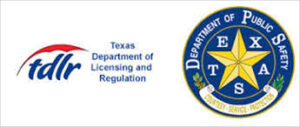Standards for Driver Education
The driver education course offers curriculum and instructional materials that comply with all requirements of Texas Education Code 1001, Subchapter C and 16 Texas Administrative Code, Chapter 84, Subchapter M.
Driver Education Course: Curriculum Outline
One: Traffic Laws
- Introduction

- Your License to Drive
- Right-of-Way
- Traffic Control Devices
- Controlling Traffic Flow
- Alcohol and Other Drugs
- Cooperating with Other Roadway Users
- Driving Plan
- Behind-the-Wheel Instruction
- Observation Instruction
- Simulation Instruction
Two: Driver Preparation 

Only $200.00 Driver Education Program
- Pre-Drive Tasks
- Occupant Protection
- Symbols and Devices
- Starting Tasks
- Vehicle Operation and Control
- In-Car Observation Instruction
- Occupant Protection
- Symbols and Devices
- Starting Tasks
Three: Vehicle Movements
- Visual Attention, Mental Attention, and Communication
- Reference Points
- Vehicle Balance
- Classroom Progress Assessment
- Visual Attention and Communication
- Vehicle Maneuvers
Four: Driver Readiness
- Driving Practices
- Fatigue
- Aggressive Driving
- Community Safety Education Act
Five: Risk Reduction (Management)
- Risk Factors
- Space Management
Six: Environmental Factors
- Environmental Characteristics.
- Environmental Risk Factors
- In-Car Observation
- Simulation Instruction
Seven: Distractions
- Multi-task Performances
- In-Car Progress
- Simulation
Eight: Alcohol and Other Drugs
- Alcohol and Other Drugs Problems
- Nature of Alcohol-Related Crashes
- Physiological Effects
- Psychological Effects
- Other Drug Effects on the Driving Task
- Zero-Tolerance
- Vehicle Movements and Reference Points
Nine: Adverse Conditions
- Adverse Weather and Reduced Visibility
- Traction Loss
- Emergencies
Ten: Vehicle Requirements
- Vehicle Malfunctions
- Maintenance
- Trip Planning
Eleven: Consumer Responsibilities
- Vehicle Use and Ownership
- Insurance
- Environmental Protection and Litter Prevention
- Anatomical Gifts
- Recreational Water Safety
- Human Trafficking
Twelve: Personal Responsibilities
- Comprehensive Classroom Assessment
- Driver Licensing
- Driving Plan
From Learner’s Permit to Licensed Driver: The Journey of Driver Education in Texas
Step into the driver’s seat and embark on a captivating journey through the evolution of driver education in Texas. From navigating the maze of paperwork for a learner’s permit to the euphoria of holding a shiny new driver’s license, this article will guide you through the empowering process.
Let us explore the pivotal changes in driver education protocols, curriculum enhancements, and the incorporation of advanced technologies in training. As we delve into driver education, you’ll gain insights into classroom teachings, interactive online modules, and real-time practice sessions.
The importance of driver education
Driver education is a crucial component of preparing individuals for the responsibilities of safe and competent driving. Most importantly, it has become essential for aspiring drivers to undergo structured education to develop the necessary skills and knowledge. Thus, the significance of driver education extends beyond the technical aspects of operating a vehicle, understanding road signs, and traffic laws.
By equipping individuals with the tools to navigate diverse driving scenarios, driver education plays a pivotal role in enhancing road safety and reducing the likelihood of accidents. Aspiring drivers who recognize the value of education in this realm are better equipped to handle the challenges of real-world driving.
The process of obtaining a learner’s permit in Texas
The journey towards becoming a licensed driver in Texas commences with the acquisition of a learner’s permit. Aspiring drivers, typically between the ages of 15 and 17, are required to undergo a process that includes a written knowledge test, vision screening, and parental consent. The learner’s permit serves as the initial step in the progression towards obtaining a full driver’s license and allows individuals to practice driving under certain conditions.
The process of obtaining a learner’s permit in Texas entails familiarity with the state’s traffic laws, road signs, and safe driving practices. This foundational knowledge is crucial for individuals to develop a comprehensive understanding of the rules and responsibilities associated with operating a motor vehicle.
Driver education requirements in Texas
In line with its commitment to fostering competent and responsible drivers, Texas has established specific driver education requirements that aspiring drivers must fulfill. These requirements are designed to ensure that individuals receive comprehensive instruction and training to navigate the intricacies of driving in a diverse and dynamic environment.
One of the core requirements for driver education in Texas is the completion of a state-approved driver education course. Thus, a structured curriculum is tailored to equip individuals with knowledge and skills to operate a vehicle safely, responsibly, and confidently.
Benefits of enrolling in a driver education program
The decision to enroll in a comprehensive driver education program offers a multitude of benefits that extend far beyond the acquisition of a driver’s license. These programs are designed to impart essential knowledge, cultivate crucial driving skills, and instill a mindset of responsible and defensive driving. By enrolling in a structured driver education program, individuals gain access to expert guidance, interactive learning experiences, and practical training that form the foundation of safe and proficient driving. One of the key benefits of enrolling in a driver education program is the opportunity to develop a thorough understanding of traffic laws, road signs, and the nuances of navigating diverse driving scenarios.
Choosing the right driver education course
The landscape of driver education in Texas encompasses a diverse array of courses and programs, catering to the varied needs and preferences of aspiring drivers. Choosing the right driver education course is a pivotal decision that significantly influences the quality of the learning experience and the proficiency of the driver. When evaluating driver education courses, prospective learners should prioritize state-approved programs that adhere to established standards of curriculum, instruction, and training.
Behind-the-wheel training and experience
The transition from theoretical knowledge to practical application is a defining phase in the journey of driver education. Behind-the-wheel training and experience form an integral component of the learning process, offering aspiring drivers the opportunity to apply their knowledge in real-world driving scenarios under the guidance of experienced instructors.
Behind-the-wheel training facilitates the development of essential driving skills, including vehicle control, maneuvering techniques, hazard recognition, and decision-making in dynamic environments.
The Texas driver’s license examination
The culmination of the driver education journey in Texas culminates in the pivotal milestone of the driver’s license examination. This comprehensive assessment evaluates the knowledge, skills, and aptitude of aspiring drivers, serving as a testament to their readiness to operate a motor vehicle independently on Texas roadways.
The Texas driver’s license examination comprises both written and practical components, testing the theoretical understanding of traffic laws, road signs, and safe driving practices, as well as the practical application of driving skills.
Advanced driver education options
The evolution of driver education in Texas has paved the way for advanced options that cater to the diverse needs and preferences of learners. Beyond the foundational requirements, individuals have the opportunity to engage in specialized training programs, advanced simulators, and immersive experiences that elevate their driving proficiency to higher levels.
Advanced driver education options encompass specialized courses that delve into specific aspects of driving, such as defensive driving techniques, advanced vehicle control, and situational awareness in challenging environments.
The impact of driver education on road safety
Driver education on safety is profound, extending beyond the individual to the collective well-being of road users. In sum, driver education serves as a cornerstone in mitigating the risks of accidents and promoting adherence to traffic laws.
Driver education resonates with the prevention of collisions and the cultivation of drivers who prioritize safety on the road. This ripple effect, however, contributes to the enhancement and safety of the highways for everyone.
Advanced technologies and methodologies in driver education further amplify their impact on road safety.
